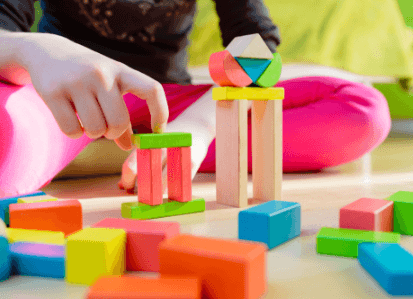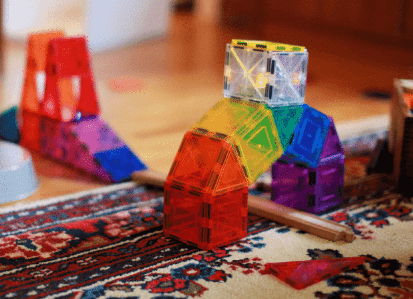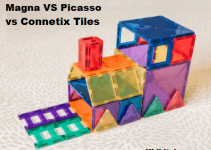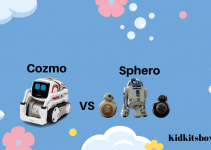Here we will compare between Close-Ended vs. Open-Ended toys, which toys are better for kids in 2023 and the benefits of both.
What is a Close-ended toy?
Closed toys have one purpose and one way to play with them. No matter how you look, a toy car is always a toy car. Or a puzzle; there is only one way to complete a puzzle, right or wrong.

Items with a single purpose are the cornerstone of the Montessori method because they control errors and allow children to direct their play. Although our cylinder is made of wood, it is naturally closed because there is a right and wrong way to complete it, and the puzzle automatically forces the children to modify their behavior to complete the puzzle.
This allows children to focus on a set skill and master it with a clear sense of accomplishment. They generally control errors for children, and you will find that the level of challenge is specific to your child over time.
What is an Open-ended toy?
An open-ended toy can be used for various play, not specific purposes. If you think of a wooden rectangular block, it could be a car, a phone, a bottle, or an airplane. There is no single way or purpose to play with it. There are no rules. No instructions. There are no guidelines. As parents, we must let go of our expectations of play.

We need to ensure the material allows for an open ending and doesn’t dictate how our child plays (child-led for more details here). It also provides a space where there is no right or wrong, and children can change the narrative at any time to make no mistakes.
Close-Ended vs. Open-Ended Toys in 2023?
Advantages of Close-ended toy:
1. Purpose
Young children love nothing more than having a purpose; the finished material provides just that. Each material has a clear purpose, giving children a sense of ownership and fulfillment.
2. Challenges
These materials can be chosen to give children an appropriate level of challenge. There is something very satisfying for children (and adults) when solving difficult but out-of-reach problems.
3. Self-correction
Many closed materials allow self-correction. In other words, it’s not what adults say but when they have a problem.
For example, for a cylinder with a handle, if one cylinder is misplaced, you know that the last cylinder will not fit, and you will have to try another method.
4. Specific Skills
Each material aims to teach or hone a specific skill, such as sizing, shape, writing, or color. By isolating one skill at a time, children can focus and master that skill.
5. Mastery
The satisfaction of completing the task accompanies the purpose and challenge. Children feel made, especially when mastered for the first time. You can then continue teaching younger children how to use the material.
6. Concentration
There is often an in-domain look when children work through these materials and challenges. When children focus deeply on this task, they often want to keep repeating it after mastering it.
7. Clearance
Part of the sequence is to take the tray off the shelf and put it back. Toddlers also practice throughout the entire cycle of activity. Remove the tray from the lathe, place the material on the work mat, use the workpiece, put it back on the tray, then put it back on the shelf. This is a great habit you can develop.
8 Order
Young children crave order because it gives them a sense of security in a world where order feels vast. Closed materials give them a sense of order that is attractive and inviting.
9. Sequencing
Often, closed material involves multiple steps, which helps young children learn how to order and plan. They memorize a specific sequence for the steps and gradually add more steps based on age and experience.
Advantages of Open-Ended Toys:
Most homes, including Montessori homes, contain many open-ended materials or toys. Examples of open toys include Magna tiles, Picasso, connex tiles, natural objects, art supplies, figurines, and automobiles. There is no reason to show you how to play with this material.
These plays are often especially enjoyed by children over 2.5 years old, as children over 2.5 years old start playing their favorite games and have more fun with age. In addition, the open play has several advantages:
1. Creativity and Imagination
The possibilities are endless with this resource. Children can develop their ideas on how to play with them and create a story to play with them. There are no restrictions.
2. No Rules
Open toys can be a lovely respite and comfort for kids who want to play without rules or expectations, especially after some time, such as at school. Without right or wrong, this play can feel free.
3. Handling events and stories
Open-ended toys and pretend play are great ways for children to work through events, friendships, and new situations. It’s also a way to retell a story or create your own.
4. Independent play
Often, these toys are best for long hours of play while we do things on our own. This kind of play allows kids to immerse themselves in their little world with space for creativity, mess, and imaginative play.
Conclusion: Which Toy is better?
Close-Ended and Open-Ended toys can be great for problem-solving, serenity, and verbal and social skills. Both types of toys are valuable, and the kids love them. Balance is key!
Frequently Asked Questions
Why are Open-ended toys good?
Because it allows for creativity and problem-solving and free and independent play opportunities.
What are Closed toys activities?
Closed toys have a clear beginning and an end. Your child will finish playing with the toy and move on to another activity. They teach the patience to complete tasks and see things through to the end. Closed toys and activities draw attention.
What do children learn from open-ended play?
Open play is very important for early childhood development. It promotes children’s imagination and creativity rather than restricting them with guidelines or rules. It also helps children learn problem-solving skills by acting out hypothetical scenarios.
How can open toys help develop motor skills in children?
Open play improves concentration while fostering resilience and children’s ability to act independently and intentionally. All these are valuable life skills your child can learn just by playing!

